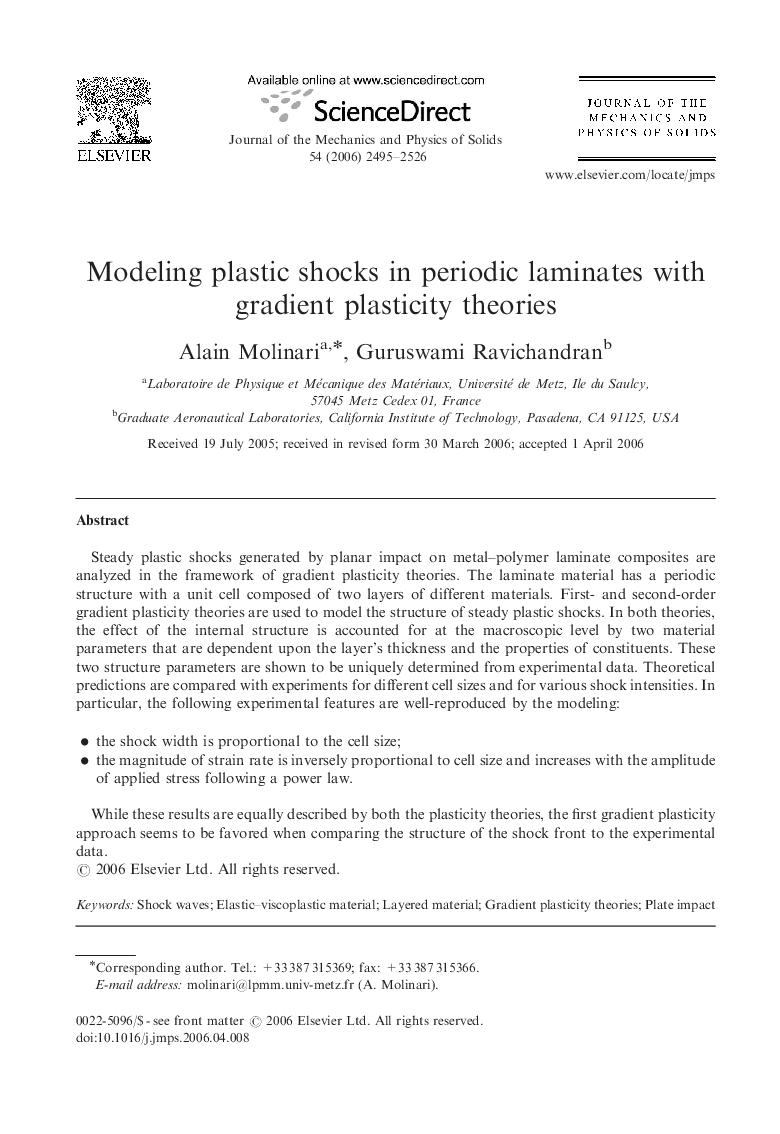| Article ID | Journal | Published Year | Pages | File Type |
|---|---|---|---|---|
| 800203 | Journal of the Mechanics and Physics of Solids | 2006 | 32 Pages |
Steady plastic shocks generated by planar impact on metal–polymer laminate composites are analyzed in the framework of gradient plasticity theories. The laminate material has a periodic structure with a unit cell composed of two layers of different materials. First- and second-order gradient plasticity theories are used to model the structure of steady plastic shocks. In both theories, the effect of the internal structure is accounted for at the macroscopic level by two material parameters that are dependent upon the layer's thickness and the properties of constituents. These two structure parameters are shown to be uniquely determined from experimental data. Theoretical predictions are compared with experiments for different cell sizes and for various shock intensities. In particular, the following experimental features are well-reproduced by the modeling:•the shock width is proportional to the cell size;•the magnitude of strain rate is inversely proportional to cell size and increases with the amplitude of applied stress following a power law.While these results are equally described by both the plasticity theories, the first gradient plasticity approach seems to be favored when comparing the structure of the shock front to the experimental data.
